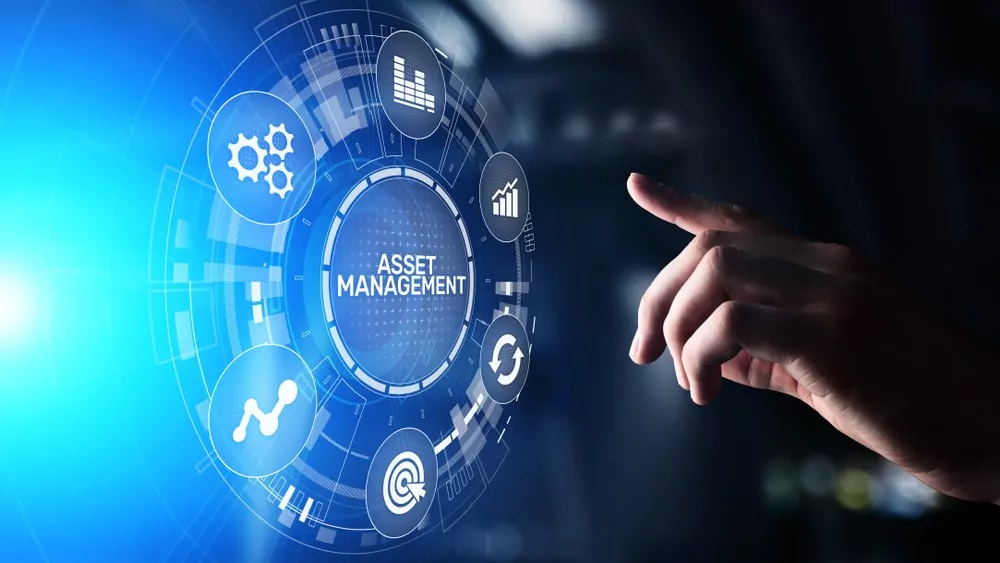Managing the life cycle of assets is all about making sure everything in your business is running smoothly and efficiently, from the moment you first think about purchasing an asset to when it’s time to replace it. It involves a series of steps, including planning, acquiring, operating, maintaining, and ultimately disposing of your assets. It’s not just about making your business run better; it’s also about saving money and ensuring your assets have a long and productive life. In this guide, we’ll break down asset life cycle management in simple terms. We’ll discuss the different stages, why asset life cycle management is important, and what you can do to handle your assets as effectively as possible.
What is Asset Life Cycle Management?
Asset life cycle management is a strategic and analytical approach used to carefully navigate every stage of an asset’s life cycle. By doing this, you can achieve maximum operational efficiency and yield a higher return on investment.
The asset life cycle is typically broken down into 4 fundamental stages:
- Planning
- Procurement/Acquisition
- Operation and Maintenance
- Disposal/Archive
By diligently planning and adhering to best practices in asset life cycle management, organizations can gain deeper insights into the performance and value of their most important assets, whether it’s an espresso machine in a coffee shop or a CNC lathe in a manufacturing plant. Failing to understand and manage the asset life cycle can result in various challenges, including aging assets, escalating maintenance costs, and diminishing asset values.
Why is Asset Life Cycle Management Important?
Assets are the backbone of any business, regardless of industry or size. As assets naturally experience wear and tear, their operating life decreases and maintenance becomes more and more necessary. Eventually, the cost of repairs can exceed the price of replacement, which might mean that that asset needs to be replaced. Deciding when to dispose of an asset can be influenced by factors like usage, operator handling, or the effectiveness of a maintenance plan.
Asset life cycle management (which is also referred to as LCAM, or life cycle asset management) empowers businesses to predict when an asset will reach peak performance and assess its remaining useful life. This knowledge is invaluable for planning maintenance or replacement. A data-driven approach to asset life cycle management also ensures that assets remain in operation for as long as possible, offering numerous additional capabilities. These might include items such as calculating depreciation value, establishing preventive maintenance strategies, ensuring compliance with regulatory standards, estimating procurement and replacement costs, and integrating assets into asset tracking systems.

Ready to Learn How CMMS Works?
If you’re looking for a way to make maintenance easier, CMMS software might be just what you need.
Learn More About What is CMMS
Understanding the 4 Stages of Asset Life Cycle Management
Stage 1: Planning
Planning is the foundation of effective asset management and occurs before asset acquisition. It involves determining the need for a specific asset, evaluating existing assets, and analyzing trends and data. Key considerations at this stage include:
- Identifying the required asset
- Defining its purpose
- Assessing its potential to enhance operations
- Determining the available budget
- Estimating its depreciation value
This initial phase is critical for all stakeholders, from financial teams to operators. The decision to acquire an asset depends on its alignment with the business’s needs, its contribution to operations, and its potential for revenue generation.
Stage 2: Procurement/Acquisition
Once the need for an asset is established, the next step is procurement. This involves purchasing the asset and managing the financial aspects within the budget set during the planning stage. Successful procurement management can streamline the purchase process and reduce costs. The procurement life cycle typically includes:
- Identifying goods or services
- Shortlisting suppliers
- Negotiating costs and delivery terms
- Finalizing purchases
Stage 3: Operation and Maintenance
The longest stage in an asset’s life cycle is operation and maintenance. During this phase, the asset fulfils its intended purpose, contributing to business operations and generating revenue. This stage also involves monitoring the asset, performing upgrades, applying patch fixes, managing licenses, and conducting audits. Regular monitoring and checks are critical to identifying and addressing performance issues that may arise unexpectedly. An effective asset maintenance plan is essential for prolonging reliability and performance.
Without a maintenance plan, organizations are likely to experience unplanned downtime and high repair costs. Various maintenance types are available, including reactive, predictive, and preventive approaches, each with its own merits. A well-chosen maintenance plan aims to:
- Reduce downtime
- Minimize emergency repair costs
- Maximize equipment uptime
- Extend an asset’s life expectancy
Maintenance can even enhance an asset’s performance beyond its original specifications by addressing potential areas for improvement.
Stage 4: Disposal
At the end of an asset’s useful life, it is removed from service and may be sold, repurposed, discarded, or recycled. The disposal stage can occur at any point after an asset’s acquisition, with factors like current value influencing the decision. Even when an asset no longer holds business value, proper disposal is essential to prevent environmental harm, especially in industries like oil and gas or chemicals. Disposal methods can include dismantling the asset or wiping data clean, particularly for IT hardware. If a replacement is needed, the asset life cycle begins anew.
Types of Asset Life Cycles to Consider
Asset life cycle management isn’t limited to physical assets; it extends to various asset types. This adaptability allows businesses to implement customized LCAM protocols:
- IT Asset Life Cycle Management: Focuses on both software and hardware assets.
- Software Asset Management Life Cycle: This determines the life cycle of software licenses and usage, reducing the risks of using outdated software and improving employee offboarding processes.
- Fleet Life Cycle Management: Concentrates on maintenance and safety for fleet vehicles during their operation while considering fluctuating values.
- Digital Asset Life Cycle Management: Encompasses the digital asset life cycle from creation and management to distribution and archiving.
Benefits of Asset Life Cycle Management
Asset life cycle management comes with several benefits that enhance your organization’s return on investment:
- Extended Asset Lifespan: Real-time asset performance data collected through sensors allows operators to measure performance and undertake preventive maintenance. This approach extends an asset’s useful life and optimizes its performance.
- Reductions in Cost and Downtime: Proactive monitoring and maintenance significantly reduce the risk of costly repairs and downtime. Anticipating necessary repairs allows for scheduled maintenance, preventing unexpected equipment failures.
- Greater Efficiency: Asset life cycle management leverages IoT capabilities and artificial intelligence for preventive maintenance, enabling real-time data analysis and on-the-go decision-making. This approach enhances operational efficiency and reduces costs.
Asset Life Cycle Best Practices
To optimize asset life cycle management, organizations should follow best practices that have been refined over the years.
3 key practices include:
- Auditing Existing Practices: Evaluate current asset management practices to identify strengths and weaknesses. This assessment forms the basis for improvement.
- Exploring Improvement: Seek ways to enhance asset management, whether through advanced technologies or better maintenance strategies.
- Reviewing Policies: Regularly assess and update asset management policies to ensure they align with organizational goals and industry standards.
How NEXGEN Can Help with Asset Life Cycle Management
NEXGEN offers valuable support to improve your asset life cycle management process. To justify new asset acquisitions, you’ll need to review your existing equipment and capital assets. NEXGEN’s mobile CMMS app provides easy access to all relevant data, enabling informed decisions. Modern CMMS and EAM software are crucial for maintaining physical assets in optimal condition, organizing repair and maintenance work, and managing MRO inventory.
With NEXGEN, you can use the stored and generated asset data to calculate productivity and revenue generation potential. These insights can be leveraged to further enhance asset utilization.
Schedule a demo with us using the button below.
Life Cycle Management With NEXGEN’s CMMS
NEXGEN helps you plan and execute various proactive maintenance strategies for new assets. Ready to optimize your asset life cycle management program with us?
Frequently Asked Questions (FAQs)
-
What Is the Asset Life Cycle?
The asset life cycle refers to the entire journey of an asset during its time under business ownership. While many view the procurement of an asset as the starting point, it commences with planning. It includes the process of recognizing the need for an asset and extends through its useful life until eventual disposal.
-
What Is Asset Life Cycle Management?
Asset life cycle management involves comprehending, enhancing, and gaining insights from the asset life cycle. It consists of a set of guidelines established through the collection and analysis of asset data to enhance the way a business acquires, uses, and ultimately disposes of its assets.
-
What Are the Stages of Asset Life Cycle Management?
The asset life cycle comprises 4 distinct stages:
- Planning: This is where it all begins. The planning stage involves identifying the need for an asset and setting the groundwork for its acquisition and utilization.
- Procurement/Acquisition: Once the plan is in place, this stage involves the actual procurement or acquisition of the asset, whether it’s through purchase or other means.
- Operation and Maintenance: This stage covers the active use of the asset, including regular maintenance to ensure it functions effectively and efficiently.
- Disposal/Archive: The final stage deals with the end of the asset’s useful life, including its proper disposal or archival, ensuring that it’s done in an environmentally responsible and compliant manner.





